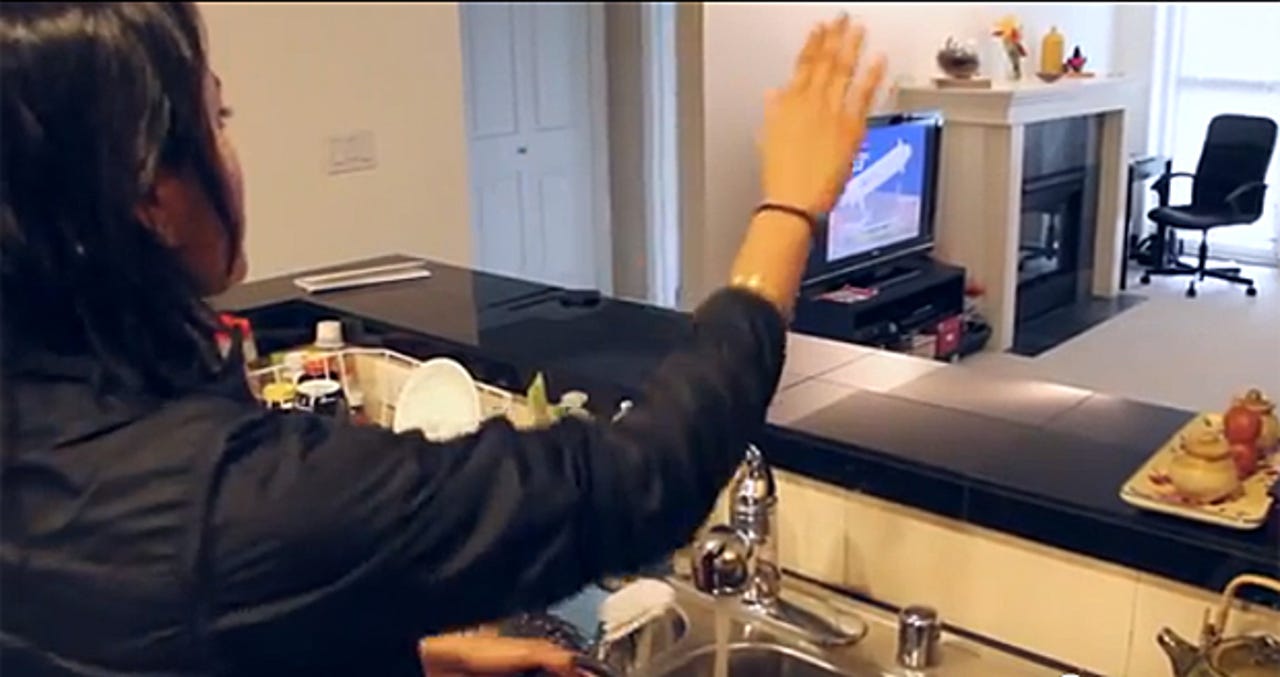WiSee: Gesture recognition tech is closer than you might think

Thanks to technologies like Microsoft's Kinect, we're getting closer than ever before to being able to interact with our computers by simply waving our hands in the air. But what if you want to wave my PC on or off even if you're not in front of a camera? Believe it or not, the technology may be coming soon and its core, Wi-Fi routers, are already likely to be in your home or office.

University of Washington (UW) computer scientists have developed gesture-recognition technology, WiSee, that's well on its way to making Iron Man or Minority Report-style science-fiction computer interaction a step closer to reality.
It turns out that with existing Wi-Fi hardware you can re-purpose "wireless signals that already exist in new ways. You can actually use wireless for gesture recognition without needing to deploy more sensors," said lead researcher Shyam Gollakota, a UW assistant professor of computer science and engineering.
It's not perfect yet. The UW researchers claim that the average accuracy is 94 percent with a standard deviation of 4.6 percent when classifying between nine gestures and up to five individuals in an apartment-sized space. Still, for something that's still a laboratory experiment, that's impressive.
UW also claims that their "technology is simpler, cheaper [than Kinect and similar video-gesture user-interface devices." The only "new" technology that's needed to make it work is a “smart” receiver device that listens to Wi-Fi transmissions. This receiver could be little more than an existing multiple-input/multiple output (MIMO) 802.11n Wi-Fi router with a firmware update.
“This is the first whole-home gesture recognition system that works without either requiring instrumentation of the user with sensors or deploying cameras in every room,” claimed Qifan Pu, a WiSee collaborator.
WiSee works by detecting the slight changes in Wi-Fi signal as you move. Just moving your hand or foot can cause enough of a Doppler frequency shift for the system to recognize your movement as a command. So, for example, you could make a motion that tells the system that you're about to issue an order and then make the actual command.
This could be as simple as "Start the coffee-maker," or start a chain of commands such as "Turn on the PCs and download last night's data from the branch servers."
The project is based on earlier work done by two of the UW researchers with Microsoft Research on a pair of projects with similar goals--SoundWave, which uses sound, and Humantenna, which uses radiation from a home or office's electrical wires--to track users' motions. WiSee stands out from these earlier gesture-recognition systems because it can be used throughout a small office or house instead of a single room.
The technology will be shown in public for the first time at the 19th annual MobiCom in Miami, Florida in late September and early October. Sometime after that, we may start seeing smart-homes and smart-offices to go with our smartphones.
Related Stories: